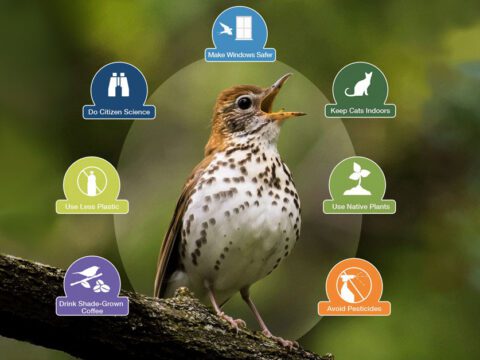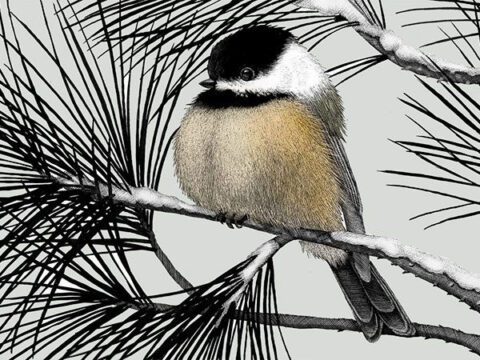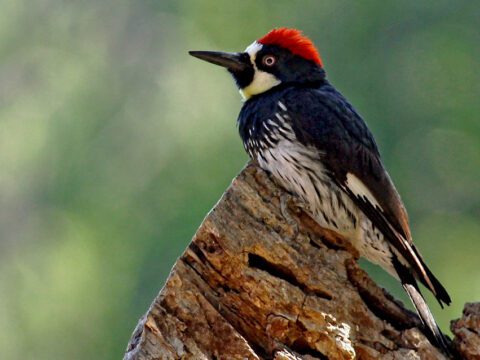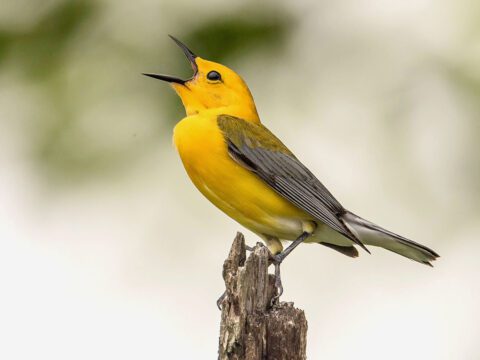How Do Starling Flocks Create Those Mesmerizing Murmurations?
By Andrea Alfano, a Cornell University junior February 21, 2013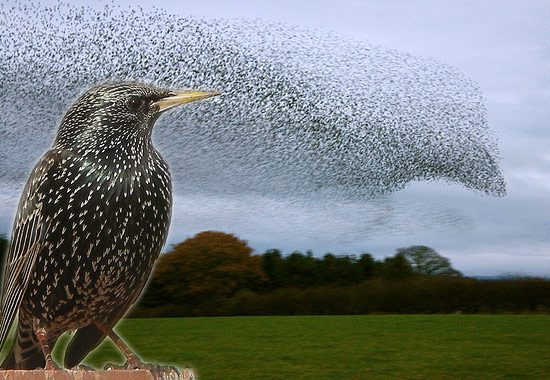
Would you pull over your car just to watch some starlings? A gathering of only a few of these speckled, iridescent-black birds isn’t a very alluring sight—particularly in North America, where these birds are invaders. The European Starling was originally introduced here by a group of well-meaning Shakespeare enthusiasts in 1880, but many Americans now consider them to be pests that serve little purpose other than to dirty car windshields and destroy crops.
But Grainger Hunt, a senior scientist at the Peregrine Fund, tells a different story in Living Bird magazine. He marvels at the way thousands of the birds gather in flocks called murmurations. They are “a dazzling cloud, swirling, pulsating, drawing together to the thinnest of waists, then wildly twisting in pulses of enlargement and diminution,” he writes. It’s certainly worth stopping your car for, or stopping to watch a video like this one, a YouTube hit recorded over the River Shannon, Ireland:
Almost always, Hunt writes, these aerial spectacles are caused by a falcon near the edge of the flock. It turns out that the beauty of a murmuration’s movements often arises purely out of defense, as the starlings strive to put distance between themselves and the predator.
So how do these masses of birds move so synchronously, swiftly, and gracefully? This isn’t an idle question—it has attracted the attention of physicists interested in how group behavior can spontaneously arise from many individuals at once. In 2010, Andrea Cavagna and colleagues at the National Council of Research and the University of Rome used advanced computational modeling and video analysis to study this question. They found that starling flocks model a complex physical phenomenon, seldom observed in physical and biological systems, known as scale-free correlation.
Surprising as it may be, flocks of birds are never led by a single individual. Even in the case of flocks of geese, which appear to have a leader, the movement of the flock is actually governed collectively by all of the flock members. But the remarkable thing about starling flocks is their fluidity of motion. As the researchers put it, “the group respond[s] as one” and “cannot be divided into independent subparts.”
When one starling changes direction or speed, each of the other birds in the flock responds to the change, and they do so nearly simultaneously regardless of the size of the flock. In essence, information moves across the flock very quickly and with nearly no degradation. The researchers describe it as a high signal-to-noise ratio.
This scale-free correlation allows starlings to greatly enhance what the researchers call “effective perceptive range,” which is another way of saying that a starling on one side of the flock can respond to what others are sensing all the way across the flock—a huge benefit for a starling trying to avoid a falcon.
Last week, a new study on starling flocks appeared in the journal PLOS Computational Biology. The researchers, led by George Young at Princeton, did their own analysis of murmuration images to see how the birds adjust to their flockmates. They determined that starlings in large flocks consistently coordinate their movements with their seven nearest neighbors. They also found that the shape of the flock, rather than the size, has the largest effect on this number; seven seems optimal for the tightly connected flocks that starlings are known for.
Imagine a game of telephone: one person passes a message along to the next person, who repeats it to another, and so on. For humans, the telephone message loses information very quickly—that’s what makes the game fun. The first finding, by Cavagna’s team, suggests that very little information is lost in a starling flock. The second finding, by Young’s team, suggests that starlings “play telephone” with their seven nearest neighbors. Somehow they are able to process messages from those seven neighbors all at once, and this is a part of their method for achieving scale-free correlation.
Still, neither finding explains how starlings are capable of such extraordinary collective responses. As the researchers admit, “How starlings achieve such a strong correlation remains a mystery to us.”
Murmurations remind us that nature’s beauty can take limitless forms, and can shock and inspire us. A number of commenters on the River Shannon video mention a feeling of connection that they experienced while watching the video. It’s as if seeing that synchrony, that seemingly perfect connection between each starling, also reminds us to value our connection to the world around us, for connection can be truly beautiful.

All About Birds
is a free resource
Available for everyone,
funded by donors like you
American Kestrel by Blair Dudeck / Macaulay Library

